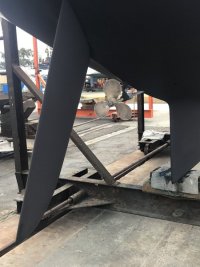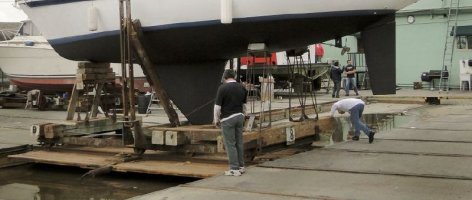A lot of people cut an access port through to the galley bilge. It's easy to do such things with an oscillating tool.
So far, I have been able to operate in that area very slowly by moving wrenches with my fingertips a fraction of a turn at a time. Sometimes removing a couple of parts to make clearance for the part du jour.
It might actually be faster to just haul the engine out of there with the boom and a halyard. But then you discover how little clearance there is around the shaft coupler...
So far, I have been able to operate in that area very slowly by moving wrenches with my fingertips a fraction of a turn at a time. Sometimes removing a couple of parts to make clearance for the part du jour.
It might actually be faster to just haul the engine out of there with the boom and a halyard. But then you discover how little clearance there is around the shaft coupler...


